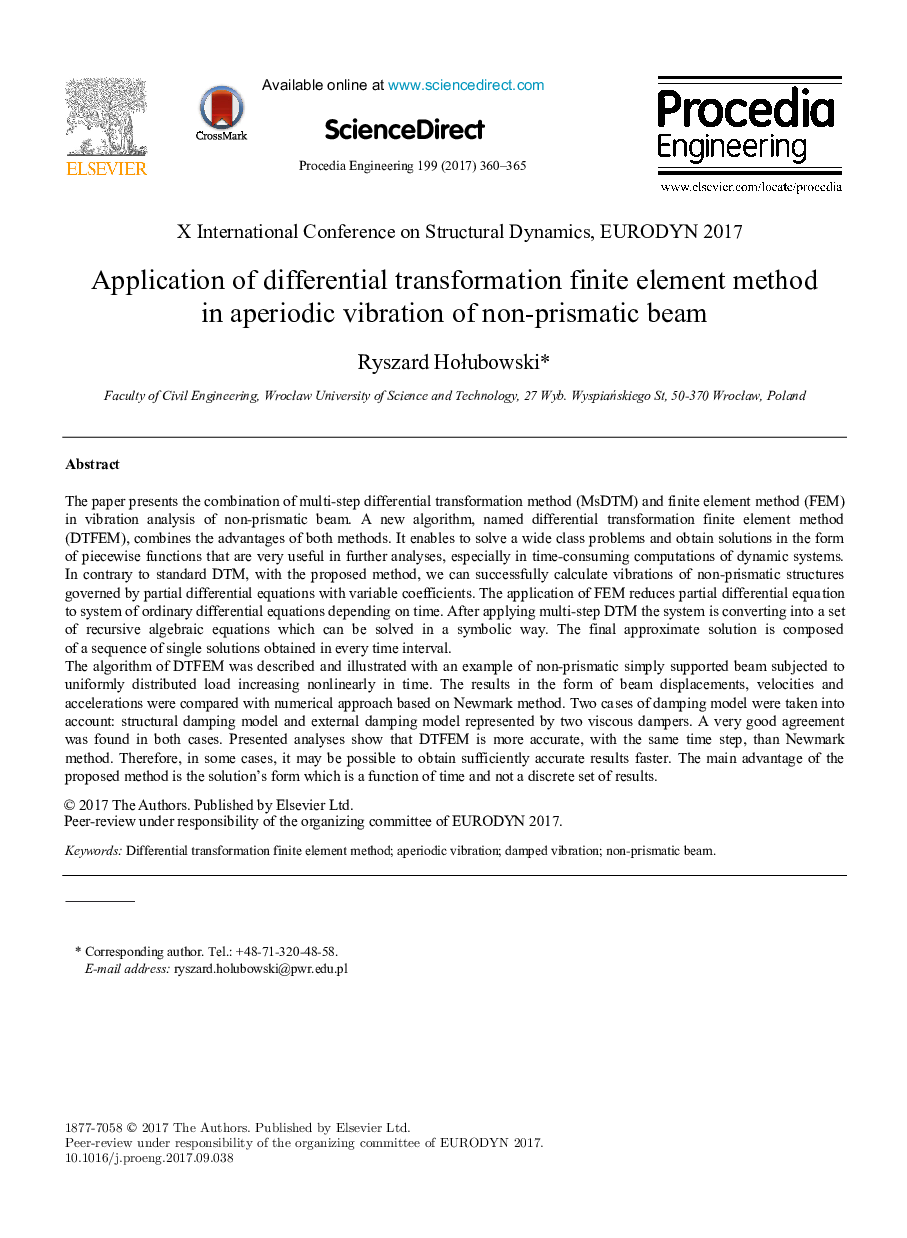| Article ID | Journal | Published Year | Pages | File Type |
|---|---|---|---|---|
| 5026788 | Procedia Engineering | 2017 | 6 Pages |
The paper presents the combination of multi-step differential transformation method (MsDTM) and finite element method (FEM) in vibration analysis of non-prismatic beam. A new algorithm, named differential transformation finite element method (DTFEM), combines the advantages of both methods. It enables to solve a wide class problems and obtain solutions in the form of piecewise functions that are very useful in further analyses, especially in time-consuming computations of dynamic systems. In contrary to standard DTM, with the proposed method, we can successfully calculate vibrations of non-prismatic structures governed by partial differential equations with variable coefficients. The application of FEM reduces partial differential equation to system of ordinary differential equations depending on time. After applying multi-step DTM the system is converting into a set of recursive algebraic equations which can be solved in a symbolic way. The final approximate solution is composed of a sequence of single solutions obtained in every time interval.The algorithm of DTFEM was described and illustrated with an example of non-prismatic simply supported beam subjected to uniformly distributed load increasing nonlinearly in time. The results in the form of beam displacements, velocities and accelerations were compared with numerical approach based on Newmark method. Two cases of damping model were taken into account: structural damping model and external damping model represented by two viscous dampers. A very good agreement was found in both cases. Presented analyses show that DTFEM is more accurate, with the same time step, than Newmark method. Therefore, in some cases, it may be possible to obtain sufficiently accurate results faster. The main advantage of the proposed method is the solution's form which is a function of time and not a discrete set of results.
